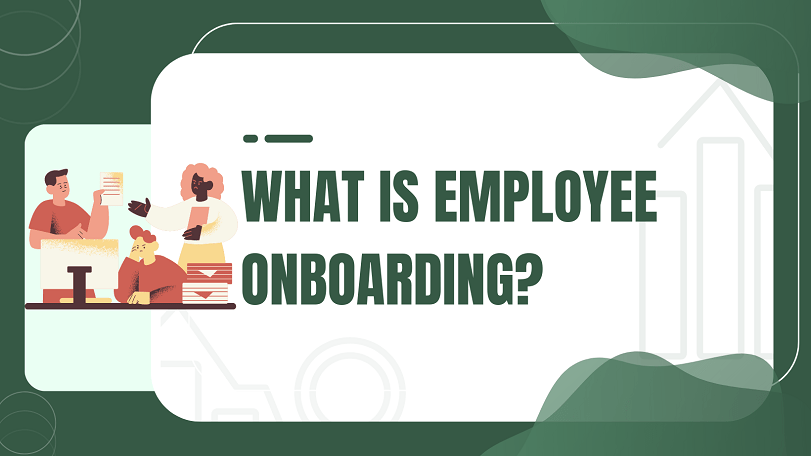Implementing an efficient employee onboarding process is critical for retaining and engaging talent at your organization. This article will explain what onboarding is, why it’s important, provide best practices, and detail the optimal onboarding workflow.
What is Employee Onboarding?
Employee onboarding refers to the process of integrating new hires into a company and equipping them with the tools, information, and training they need to quickly become productive team members.
Onboarding introduces employees to your organizational culture, values, processes, policies, and work systems. Done right, it makes new hires feel welcome and sets them up for long-term success in their new roles.
Why Effective Onboarding Matters
Far too often companies neglect adequate onboarding in favor of immediately throwing new hires into the mix. This lack of support during a transition period leads to poor outcomes including:
- Decreased productivity – Without proper onboarding, it takes new employees longer to get up to speed on processes and expectations. This delays their ability to reach full productivity.
- Higher turnover – Employees who feel lost, overwhelmed, or unsupported during their start are more likely to leave the company within the first year.
- Lower engagement – Employees who don’t understand company culture and values quickly become disengaged, disillusioned, and feel less loyalty.
- Poor performance – Lack of clear guidelines around expectations and inadequate job training sets up new hires for underperformance.
Implementing a structured onboarding process helps avoid these pitfalls and offers numerous benefits:
- Employees reach full productivity 50% faster.
- Employee retention rates increase by 25% on average.
- New hire commitment and engagement see a boost.
- Recruiting gets easier through positive word-of-mouth.
- Customer satisfaction increases from better trained employees.
Example of a Best Practice Onboarding Experience
Here’s an example of what a positive new hire onboarding experience typically looks like:
- Rebecca accepts a job offer from Acme Company. Two weeks before her start date, she receives a welcome email introducing her onboarding buddy and outlining next steps.
- On the first day, Rebecca attends orientation where she receives an overview of Acme’s history, cultural values, and performance expectations. She takes a tour, gets ID badges and laptop, and sets up payroll/benefits.
- During the first week, she attends informative sessions on company policies, design principles, voice guidelines, and more while also shadowing team members. She has meetings with her manager and onboarding mentor.
- Over the next month, she goes through extensive product and skills training while her buddy helps her get familiar with processes. Her manager checks in weekly to provide support and give feedback.
- After two months, Rebecca has successfully ramped up productivity thanks to the structured onboarding program. She feels invested in Acme’s culture and mission.
Onboarding Process Flow
A stellar onboarding process spans the employee’s first 90 days on the job. Here are the key stages:
Before Start Date
- Send welcome kit (organizational chart, training materials)
- Set up equipment, email, access credentials
- Make introductions to manager and onboarding peer buddy
First Day
- Tour office/facilities and meet team
- Explain company mission, values, culture
- Review policies and organizational overview
- Handle payroll, benefits, orientation logistics
First Week
- Set up 1:1 meetings with manager and mentor
- Provide clear expectations and training schedule
- Explain key processes, systems, tools needed for role
- Assign first tasks/projects
First Month
- Complete required intro training
- Share feedback survey on experience so far
- Set preliminary goals and review progress
- Continue shadowing teammates
First 90 Days
- Finish role-specific training
- Discuss work style and communication preferences
- Meet with manager regularly to review performance
- Discuss future career growth opportunities
Onboarding Best Practices
Here are some top strategies and tips for optimizing your employee onboarding process:
- Start pre-boarding before employee’s first day
- Automate repetitive onboarding tasks when possible
- Create checklists to track progress
- Assign mentors to provide guidance and support
- Offer both high-level and role-specific training
- Provide sufficient resources like FAQs, toolkits, wikis
- Gather new hire feedback frequently
- Encourage relationship building with teammates
- Set 30/60/90 day goals and evaluate progress
Investing in thoughtful, thorough onboarding processes that integrate and support new employees leads to immense benefits for your organization, including enhanced productivity, job satisfaction, innovation, and retention.
Author: Mercedes García
Mercedes García is a HR consultant with extensive experience in working with small and medium company owners, helping them to make their companies more efficient. She is also the editor of the blog hr4smes.com where you can find HR advise for SME owners and the knowledge of a HR director.
